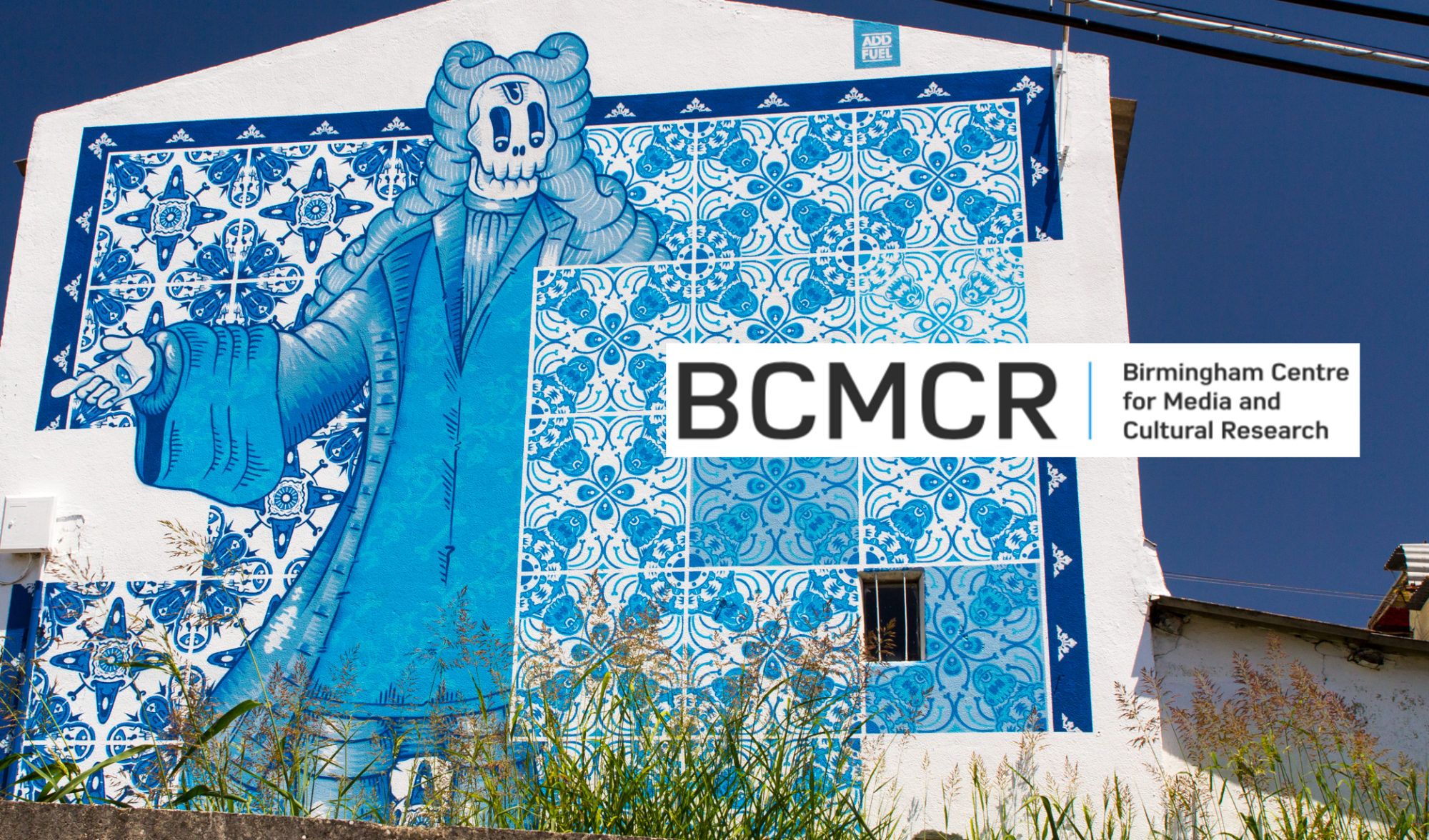by Simon Crisp.
The Screen Cultures series of BCMCR research seminars kicked off with a special session which saw Juice Aleem and Erik Steinskog (University of Copenhagen) talking about the subject of Afrofuturism, its roots, what it is and can be, and why it is important.
I have to admit that going into this session my understanding of Afrofuturism was primarily based on having read a couple of post-Black Panther articles on the subject in the Sunday newspaper supplements. However, recognising these articles didn’t scratch the surface of the subject, let alone do it justice, I was keen to learn more about the concept beyond the idea of black people in space and superhero costumes, as the mainstream media often presents it. I was also eager to explore how Afrofuturism could be considered concerning cultural translation.
As such I was pleased when Juice set out to detail what Afrofuturism “is, isn’t, could be, should be, and used to be” as he put it, and began to talk about the roots of Afrofuturism, the history of its development and the practices of people including Sun Ra and Rammellzee. With this, it became clear the extent to which these key figures, and their Afrofuturism, drew on rich heritage and traditions to present potential futures which were not burdened by more recent histories.
In attempting to relate this to the theme of cultural translation, I initially considered the way in which Afrofuturism’s act of translation of culture was happening not across borders, but into these potential futures. However, Juice then showed us some of Sun Ra’s work, the graffiti of Rammellzee, and the way they lived the reality of their created myths, saying: “This was the reality, again, this is not simply a pop artist putting on a shiny silver hat, but people living it!”
With this, I realised there was also the added dimension of translation which saw these potential futures being lived, and resonating, in the present. Afrofuturism’s act of cultural translation could be seen as not merely taking something from the past and applying to now or to the future, but also be the act of applying that potential future into the now. In thinking about it in this way, it could be suggested that Afrofuturism becomes a multi-stage non-linear process of cultural translation.
In speaking about this practical and present Afrofuturism, Juice said while it was interesting that Black Panther was out and that this got people talking about Afrofuturism, this can be on a very surface level. He went on to talk about people like the ‘Ghetto Gardener’ who works in inner-city areas of LA to get young people planting and taking back their land, saying that this was again a case of myth becoming a reality, and an example of Afrofuturism.
Finally, something else which struck me was the seeming reluctance to adopt the term Afrofuturism. Juice spoke of how Rammellzee rejected the term, and then detailed his relationship with it saying: “The name isn’t important, as much as we are here for Afrofuturism, I’m personally not concerned with that name for a variety of reasons. But it’s something that’s been pointed at me for over a decade, so I’m eventually I’m like, Okay, I’ll do the job, I’ll put that cape on, I’ll put that mask on.”
Having formerly worked as a journalist, Simon Crisp is currently completing the MA in Media and Cultural Studies at BCU. He is interested in researching the role of media representations in creating modern yoga practices. He can be found on the web and on twitter.
